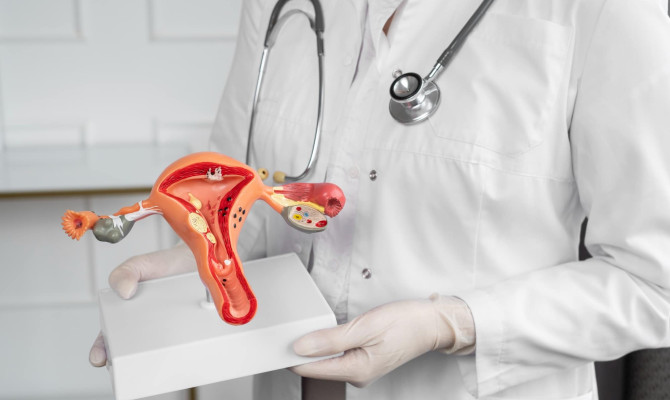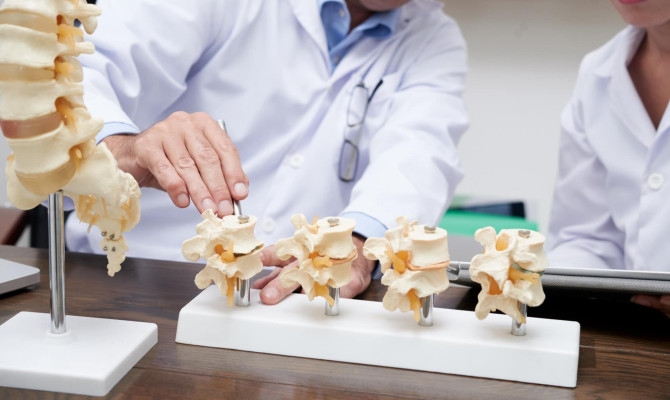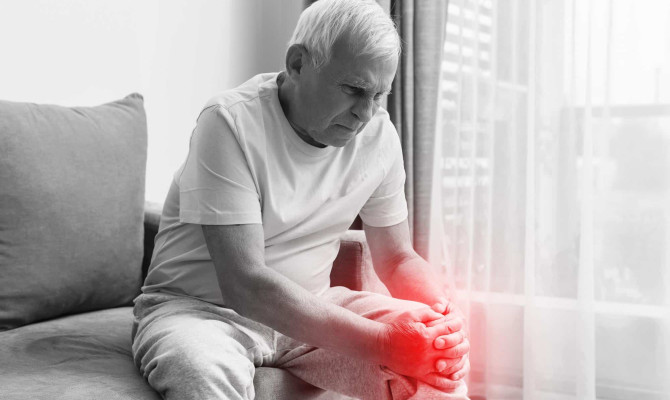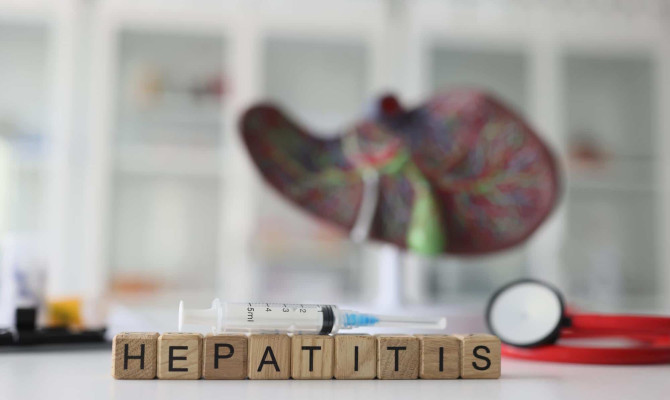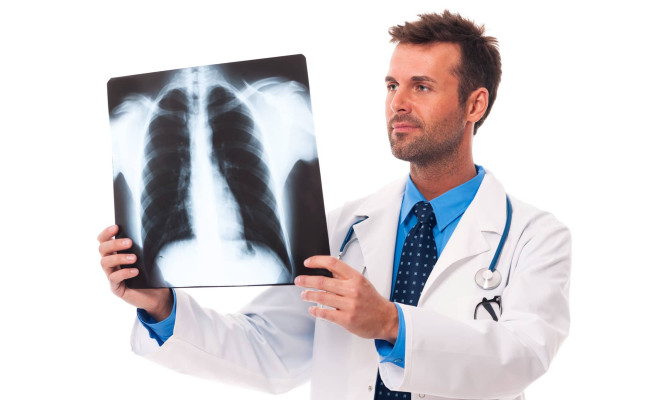What is Biopsy: Uses, Types, Benefits and Risk

- Biopsy
- 22 Aug 2023
Overview
What is Biopsy?
Biopsy is a medical procedure in which a sample of body tissue is extracted from the patient for examining and diagnosing a disease or medical condition.
The extracted tissue is preserved and sent to the pathology lab where it is finely sliced and set in wax. The slices are put on a glass slide and dyed with various dyes to highlight specific cell types and features.
Biopsies have a big effect on our lives. From finding cancer to figuring out complicated autoimmune diseases, biopsy opens the door to detailed analysis and cutting-edge treatments.
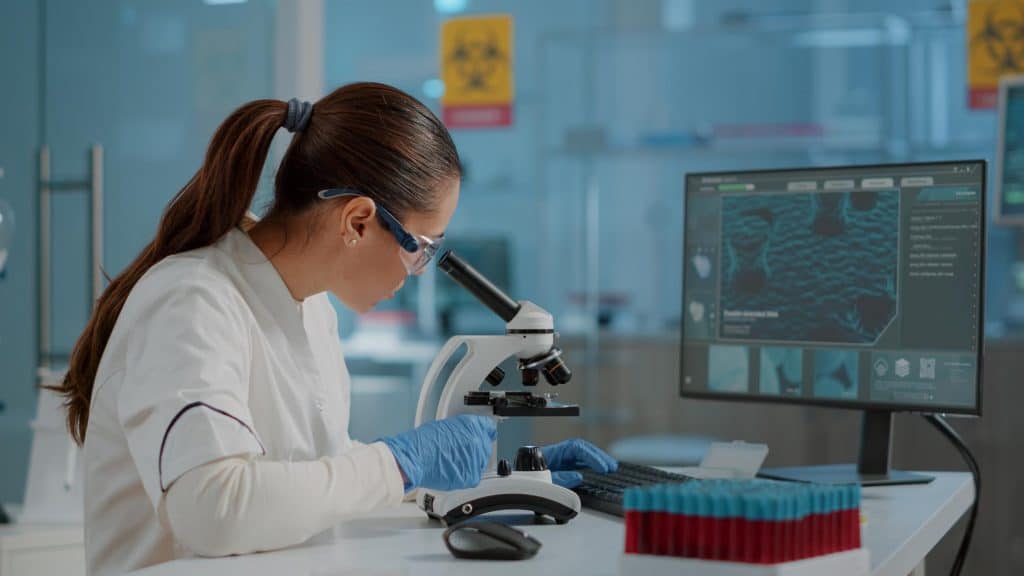
Biopsy
Uses of Biopsy
Here is a list of some typical applications for biopsy:
- Cancer detection
- Tumor characterization
- Checks disease progress
- Studies inflammation
- Organ damage evaluation
- Study the presence of Infections
- Diagnose Neurological conditions
- Diagnose dermatological issues
- Digestive issues diagnosis
- Bone marrow disorder examination
- Evaluating Genetic disorders
- Monitoring the status of transplants
Cancer detection
- Cancer can be identified via biopsy. Tissue samples are removed from suspicious masses or tumors to determine if they are malignant.4Uses| Researched based study from Cancer.ca
Characterization of a tumor
- The features of a tumor, such as the type, grade, and stage, are revealed through biopsy.
Disease progression
- Biopsy is done on people who have previously been diagnosed with cancer or other chronic conditions to track the disease’s development and gauge how well the therapy is working.
Inflammatory disorders
- Biopsy is used to assess the degree and extent of tissue damage in situations of chronic inflammatory diseases like arthritis.
Organ damage evaluation
- The damage produced by diseases affecting different organs, such as the liver, kidney, heart, or lungs, is evaluated via biopsy.
Infectious diseases
- Biopsy is used to determine the presence of pathogens and suggest the best course of therapy in situations with suspected infections.
Neurological conditions
- Brain biopsy is carried out to diagnose certain brain disorders like brain tumors and degenerative diseases.
Dermatological issues
- Skin biopsies are often carried out to identify skin disorders such infections, rashes, and skin cancer.
Disorders of the digestive system
- Diagnosis for gastrointestinal disorders including celiac disease or inflammatory bowel disease (IBD) may be made with the use of biopsies.
Bone marrow examination
- To identify blood diseases, leukemia, lymphoma, or to evaluate the health of the bone marrow in certain medical situations, bone marrow biopsies are performed.
Evaluation of transplant organs
- Biopsies are carried out during organ transplantation to evaluate the condition and functionality of the transplanted organ and look for symptoms of rejection.
Genetic conditions
- Biopsies can be used in the diagnosis of certain genetic disorders by analyzing the specific tissues or cells for genetic mutations.
Types
Types of Biopsy
There are several types of biopsies, and each is appropriate for certain circumstances and body locations.
Here are some short descriptions of some popular types of biopsies:1Types| Researched based study from Cancer.net
Needle Biopsy
It has following types:
Fine Needle Aspiration
- A thin needle is used to remove cells or fluid from a lump or suspicious area, often with the help of ultrasound or other imaging methods.
Core Needle Biopsy
- A slightly bigger needle is used to take a small sample of tissue in the shape of a cylinder for testing.
Incisional biopsy
- It is a surgical technique in which only a small piece of abnormal tissue is taken to make a diagnosis. Usually, this is done when the tumor is big or when a certain part of a bigger mass needs to be looked at.
Excisional biopsy
- In this type of biopsy, the abnormal tissue or lump is scooped out entirely. Exceptional biopsy is done when the tumor is small in size and easy to locate.
Punch biopsy
- A circular, small device is used to take a deep sample of the skin and tissues underneath it. It is often done to treat skin sores and other skin problems.
Endoscopic biopsy
- A thin, flexible tube attached with the camera on one end is called an endoscope. It is inserted into the body to look for and obtain tissue samples from organs like gastrointestinal tract, lungs or bladder.
Bone marrow biopsy
- Pea sized amount of bone marrow is extracted from the sternum or hip bone with a needle. It is done to test for blood disorders like leukemia, lymphoma, etc.
Liquid biopsy
- Instead of obtaining a tissue sample, the liquid biopsy involves studying the urine, blood and other body fluids to know the movement of tumor cells.
Shave biopsy
- Shave Biopsy is done to scrape off and get the uppermost layer of the skin for pathological examination.
Colposcopy biopsy
- A colposcopy is used to analyze a woman’s cervix and to take a tissue sample taken in suspected cases of cervical cancer. This biopsy is done to find out The cause of the negative Pap test.
The Process
What happens during a Biopsy test?
- Except for invasive biopsies, the majority of biopsy cross sections 2Theo process| Researched based study from Nlm.nih.gov are collected in an outpatient environment. They do not need admission or long-term hospitalization.
- Under general anesthesia, the test involves making tiny incisions or using needles to collect cells from the bone marrow, skin, tissue, or tumor.
- The material is submitted for analysis after extraction. In most cases, the report is ready in 7–10 days.
How long does it take to recover from a biopsy?
- The chances of recovery will rely upon the type of biopsy, location, age, and general health.
- Closure of the wound, lack of infection or edema, and resumption of regular activities are signs of recovery.
- The majority of biopsies have recovery times that range from 1 to 7 days; however, certain biopsies, such a prostate biopsy, may have recovery times of 2 to 6 weeks.
Understanding the results of Biopsy Test
There will be a macroscopic (naked eye) assessment, a microscopic (detailed description of cellular-level structure), and an invasion investigation in the report.
The grade of the tumor will help doctors figure out how far it has grown and how the cells have changed.
- Grade 1: Normally visible cells with no significant sign of rapid spread.
- Grade 2: Cells with a mild abnormality.
- Grade 3: Abnormal cells with rapid spread.
Benefits
Benefits of Biopsy
Biopsies are valuable procedures that provide benefits in the diagnosis and management of health conditions. The advantages of biopsies are as follows:
- Accurate diagnosis
- Early detection
- Assessment of tumor grade and stage
- Limited scarring
- Surgical planning management
- Differential diagnosis
- Research and clinical trials
- Palliative care guidance
Accurate diagnosis
- Biopsies offer a final diagnosis through the examination of real tissue samples. Accurate identification is necessary for appropriate treatment plan
Early detection
- Biopsies have the ability to identify diseases, such as cancer, during their initial stages. It improves the quality of care available and the chances of a full recovery.
Assessment of Tumor Grade and Stage
- Biopsies are important in determining tumor grade and stage, allowing to know the effect of treatment and disease prognosis.
Limited scarring
- The majority of biopsies are minimally invasive procedures that involve small incisions or needle punctures, which minimize scarring and facilitate faster recovery.
Helps in Surgical Planning
- Biopsies help in helping surgical planning and execution by providing important landmarks of abnormal tissue.
Differential diagnosis
- Biopsies help in distinguishing between visually similar conditions. Thus giving accurate diagnosis and avoiding unnecessary treatments.
Helps in Research and clinical trials
- Biopsies are essential for medical research and the advancement of novel treatments, as they help researchers with samples for analysis and clinical trials.
Good for Palliative care guidance
- Biopsies aid in palliative care by guiding symptom management and enhancing the patient’s quality of life.
Biopsies are essential and safe diagnostic tools in contemporary medicine, playing a crucial role in accurately identifying diseases and providing personalized care to patients.
Risk
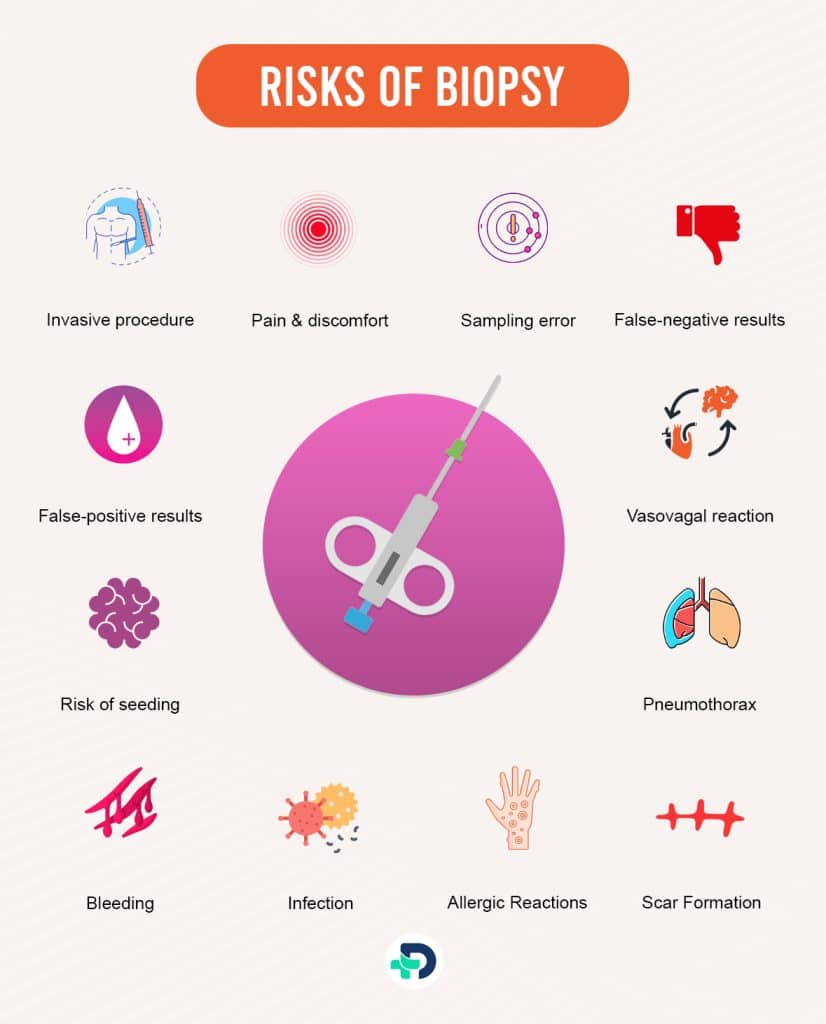
Risks of Biopsy
Although biopsies are useful for diagnosis, they possess certain disadvantages. Below are several cons associated with biopsies:
Risks related to procedure
Procedure related risks of biopsy are:
Invasive procedure
- Biopsies involve the use of a needle for extracting tissue samples. This procedure may cause discomfort and pose potential complications, including bleeding, infection, or damage to adjacent structures.
Pain and discomfort
- Patients may experience post-biopsy soreness or tenderness for a few days, despite the administration of local anesthesia.
Sampling error
- It can occur when a biopsy fails to accurately capture the most reliable or crucial part of abnormal tissue, resulting in a false-negative outcome or a misdiagnosis.
False-negative results
- They occur when the sample obtained is small or not taken from the affected area, leading to the potential failure to detect the presence of a disease or condition.
False-positive results
- They can occur when a disease is mistakenly detected, causing unwarranted concern, further testing, or unnecessary treatment.
Risk of seeding
- Although rare, it exists in some cases of biopsy where cancer cells may be dislodged or spread to other areas. However, this risk is minimal.
Risks related to Health Issues
The risks might differ based on the type of biopsy, the location of the treatment, the health of the patient etc. Several typical risk factors for biopsies include:3Risks| Researched based study from Nlm.nih.gov
Bleeding
- Biopsies that require the removal of tissue may result in bleeding where the operation was performed.
Infection
- There is a risk of acquiring infection with any surgery that involves piercing the skin’s protective layer. It can be reduced by using sterile procedures during biopsies.
Damage to Surrounding Tissues
- Depending on where the biopsy is performed, there is a chance that the biopsy procedure can harm surrounding organs or structures.
Allergic Reactions
- Some individuals might have an allergic response if the anesthetic drugs or other medicines used during the biopsy are allergic to them.
Scar Formation
- Biopsies can leave a minor scar where they were performed. Depending on the biopsy procedure, the scar’s size and visibility might change.
Pneumothorax
- Buildup of air between the lung and the chest wall may occur during some lung biopsies, such as a lung needle biopsy.
Vasovagal reaction
- During or after the biopsy process, some patients may suffer a vasovagal reaction, which may cause dizziness or a dip in blood pressure.
Nerve Injury
- Depending on where the biopsy is performed, there may be a very small chance of nerve damage, which might result in transient permanent issues.3Risks| Researched based study from Nlm.nih.gov
It’s crucial to remember that although these risk factors do exist, they are often negligible and overlap the pros of biopsies for diagnostic and therapeutic purposes.
Care
Self care after Biopsy
It’s important to take care of yourself after a biopsy to guarantee good recovery and lower the chance of problems.
The following basic recommendations should be followed:
Rest
- Take some time to relax and let your body recuperate after the treatment by getting some rest. Resist yourself from intense activity and lifting heavy weights for a few days.
Pain management
- The biopsy site may cause you some pain or discomfort. You can opt for over-the-counter painkillers like ibuprofen to resolve this.
Dressing Care
- Maintain a clean, dry biopsy site. Pay attention to any special dressing care instructions that your doctor may have given you. Contact your doctor right away if you observe swelling, redness, or discharge.
Avoid swimming
- Avoid exposing the biopsy site in water, such as hot tubs or swimming pools, until it has fully healed and any bandages have been taken off
Prevent Irritants
- Avoid using abrasive soaps, alcohol-based products, or other irritants on the biopsy site or in the vicinity.
Keep an eye out for bleeding
- Some bleeding at the biopsy site is usual. Contact your healthcare if bleeding is significant or doesn’t stop with little pressure..
Follow-up
- Attend any planned follow-up visits with your healthcare practitioner to review the biopsy findings and, if required, additional treatment.
Quit Smoking
- Smoking may delay wound healing and raise the chance of complications, so attempt to cut down if you smoke throughout the healing process.
When is a second biopsy required?
The following situations might lead your doctor to advise a second biopsy:
- The first sample’s findings are not conclusive.
- Sample taken from the wrong location.
- Sample size is insufficient for a thorough evaluation.
- To evaluate the disease’s prognosis after therapy or check for changes in tissue pathology.
Takeaway
Takeaway
The biopsy that your doctor prescribed may prevent long-term sickness for you. If the biopsy results reveal malignant cells, the doctor may order further tests to establish the cancer’s stage. A timely diagnosis is always preferable than experiencing the pain and discomfort of cancer treatment. If the illness hasn’t spread too far, you might feel better soon.
Any feedback on this article?
 This Articles content was accurate
This Articles content was accurate Very Informative Article
Very Informative Article I have a question or a comment
I have a question or a comment
 This article contains inaccurate content
This article contains inaccurate content This article was not helpful
This article was not helpful I have a question or a comment
I have a question or a comment
We appreciate your helpful feedback!
Checkout our social pages
References
-
American Society of Clinical Oncology
Biopsy | Types
-
National Library of Medicine
What happens during a biopsy? | The Process
-
National Library of Medicine
Complications of skin biopsy | Risks
-
Canadian Cancer Society
Biopsy | Uses












